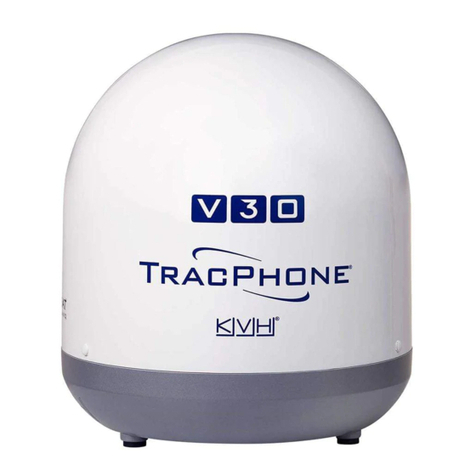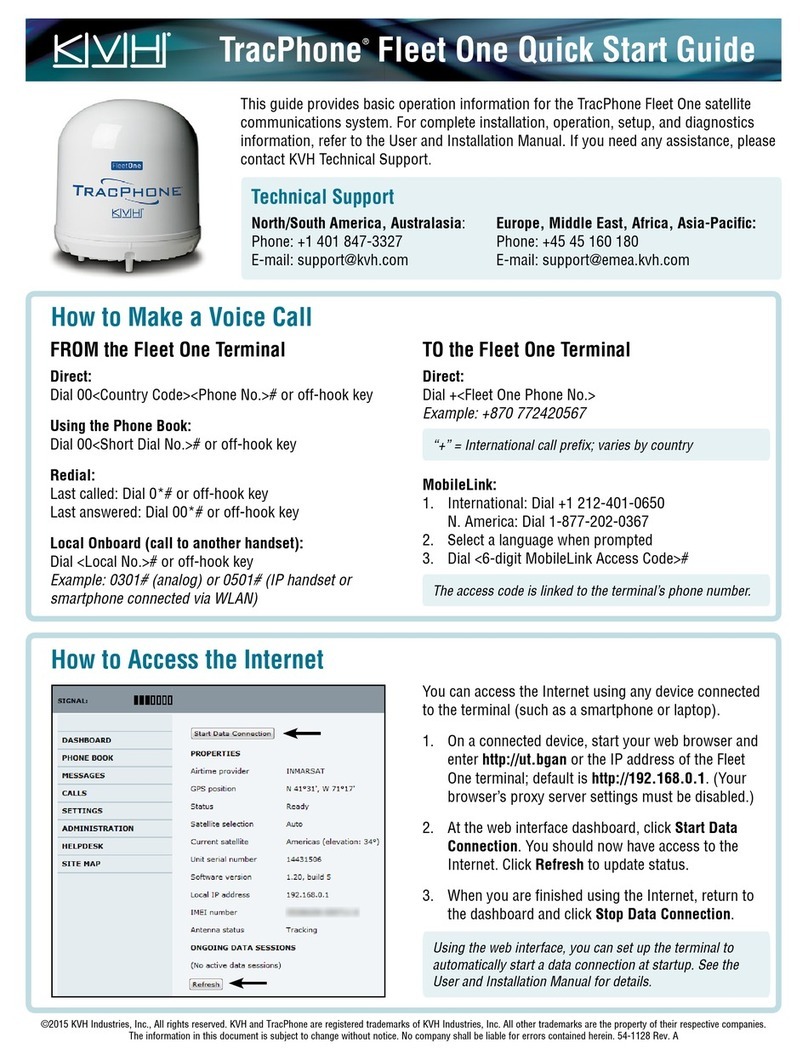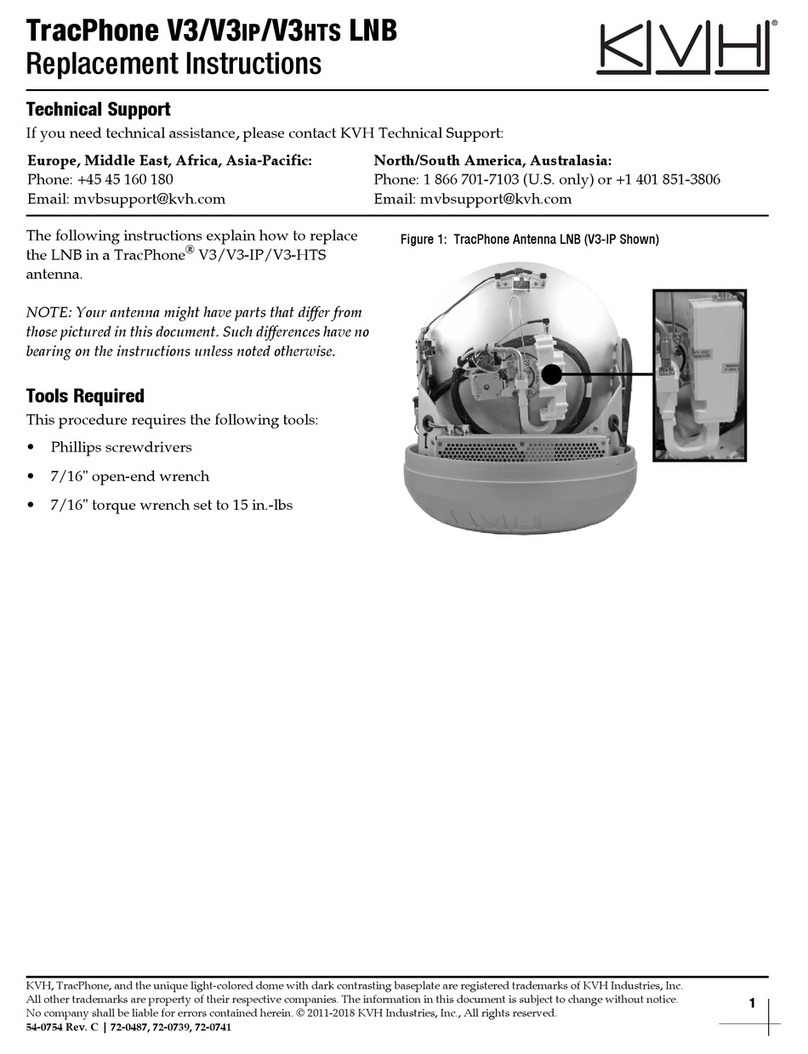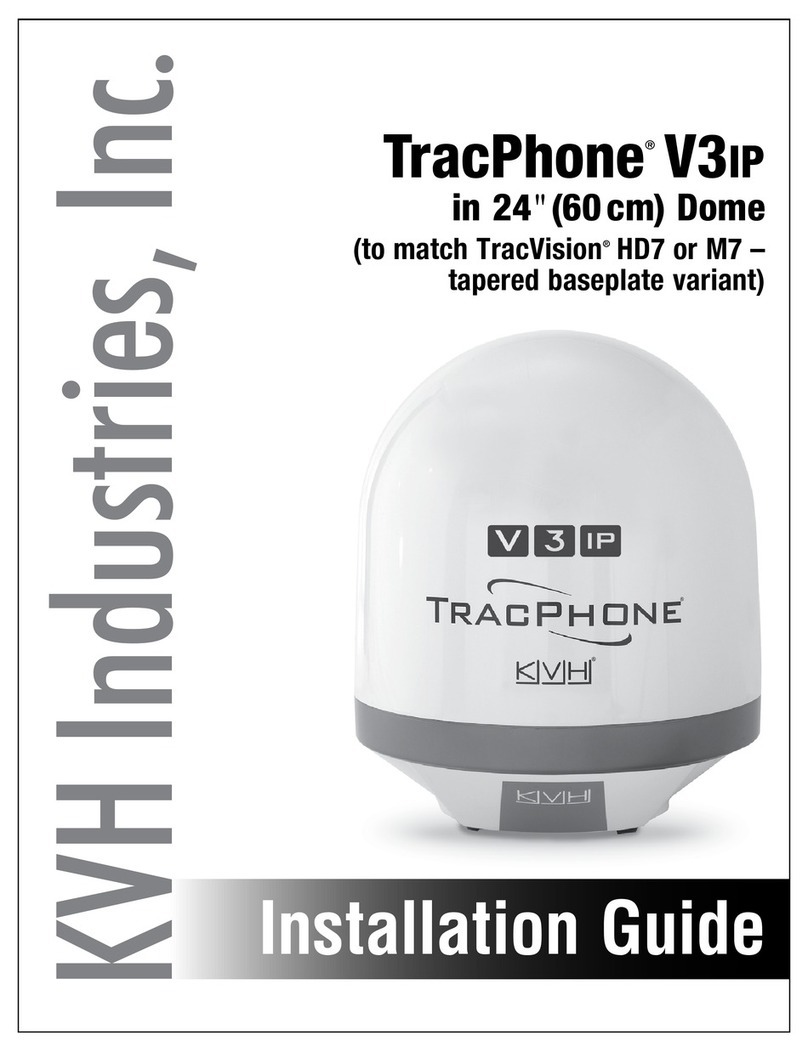
TracNet H30 Installation Guide
2
Important Safety Information
Trademark Information
KVH, TracNet, KVH ONE, and the unique light-colored
dome with dark contrasting baseplate (Reg. No.
2,864,752) are trademarks of KVH Industries, Inc.
All other trademarks are the property of their respective
companies.
Disclaimer
Every effort has been made to ensure the correctness and
completeness of the material in this document. No
company shall be liable for errors contained herein. The
information in this document is subject to change without
notice. No warranty of any kind is made with regard to this
material, including, but not limited to, the implied
warranties of merchantability and fitness for a particular
purpose.
Feedback
If you have any comments regarding this manual, please
appreciated!
Important Safety Information
This icon indicates a danger, warning, or caution
notice. Be sure to read these carefully to avoid
injury.
WARNING Risk of Electric Shock
If any component of the TracNet H30 system
becomes damaged and/or no longer functions
normally, disconnect it from vessel power,
secure it from unintended operation, and
contact KVH Technical Support (see
“Technical Support” on page 1). All repairs or
modifications must be performed by a trained,
KVH-certified technician. If you are a KVH-
certified technician, you still must contact KVH
Technical Support prior to conducting any
repairs or modifications to the equipment.
WARNING Risk of Explosion
Do not operate the TracNet Hub+ (or any other
electrical device) in an environment where
flammable gases, vapors, or dusts are present.
In addition, do not operate the unit in an
environment with a temperature outside its
5º F to 131º F (-15º C to 55º C) temperature
range.
CAUTION Risk of Electric Shock
Failure to ground the H30 system properly to
ship’s ground will cause an unsafe floating
ground condition, risking potentially lethal
electric shock. See “Connect Power” on
page 16 for details on the proper grounding of
the equipment.
CAUTION RF Radiation Hazard
The antenna transmits up to 3 watts of radio
frequency (RF) energy that is potentially
harmful. Whenever the system is powered on,
make sure everyone stays more than 32 feet
(10 m) away from the antenna. No hazard
exists directly above or below the antenna.































